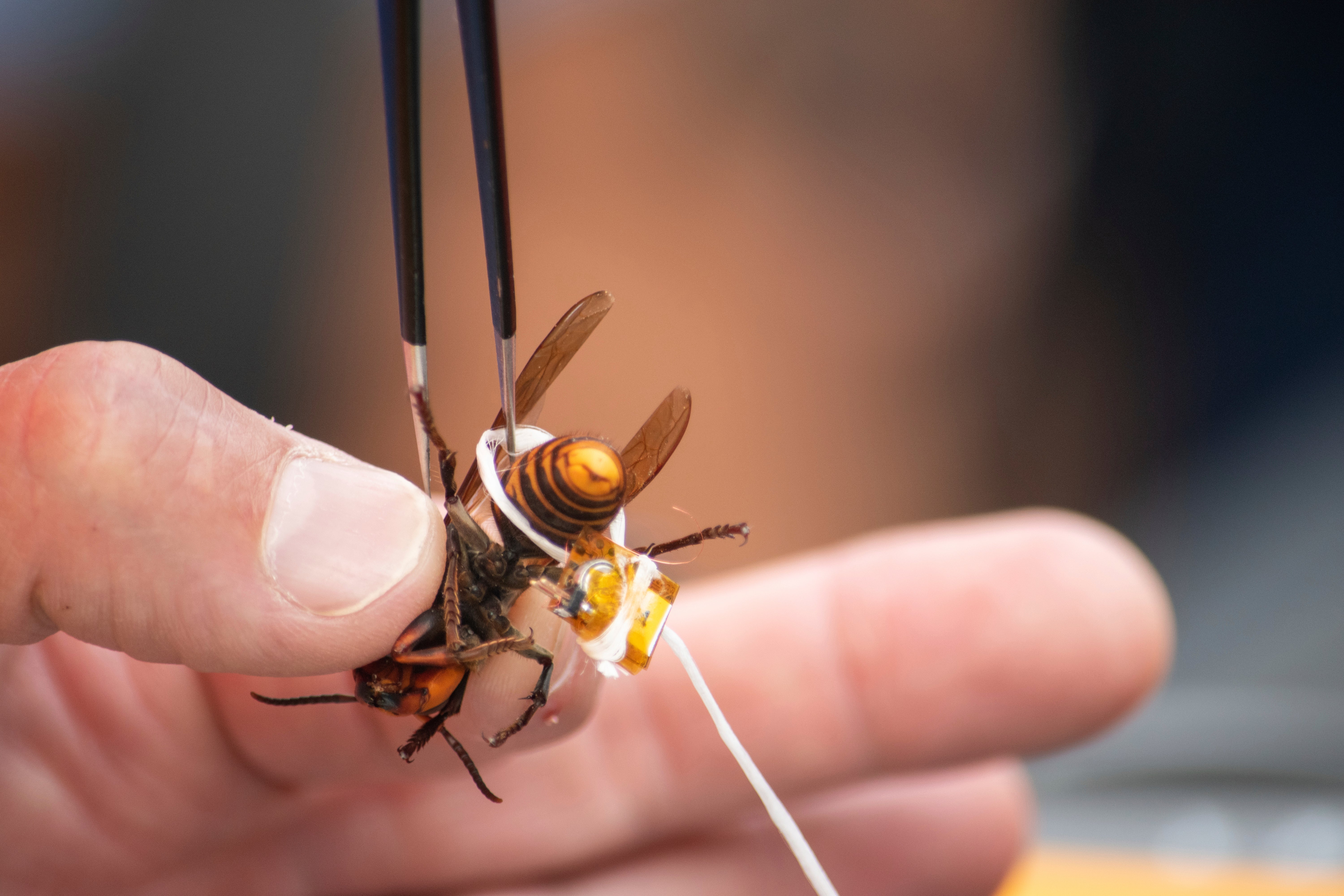First nest of ‘murder hornets’ in US destroyed
Scientists use vaccuum to destroy 200-strong nest after weeks of preparation

Your support helps us to tell the story
From reproductive rights to climate change to Big Tech, The Independent is on the ground when the story is developing. Whether it's investigating the financials of Elon Musk's pro-Trump PAC or producing our latest documentary, 'The A Word', which shines a light on the American women fighting for reproductive rights, we know how important it is to parse out the facts from the messaging.
At such a critical moment in US history, we need reporters on the ground. Your donation allows us to keep sending journalists to speak to both sides of the story.
The Independent is trusted by Americans across the entire political spectrum. And unlike many other quality news outlets, we choose not to lock Americans out of our reporting and analysis with paywalls. We believe quality journalism should be available to everyone, paid for by those who can afford it.
Your support makes all the difference.The first nest of “murder hornets” found in the US has been successfully destroyed by scientists.
Entomologists employed by Washington state spent weeks searching for and trapping the Asian giant hornets –which can reach over six centimetres long and spit venom at their prey.
After using dental floss to attach radio trackers to three hornets they had successfully trapped, they followed one to a nest in a tree near Blaine on Thursday.
The scientists, donning full-body protective gear, used a vaccuum to suck around 200 of the hornets from the basketball-sized nest.
“Got 'em. Vacuumed out several Asian giant hornets from a tree cavity near Blaine this morning,” the agriculture department tweeted, adding that more details would be provided at a news conference on Monday.
The tree will be felled to extract newborn hornets and learn if any queens have left the hive, the scientists said.
Officials will keep searching for other nests and suspect more may be in the area.
An invasive species, the hornets target honeybees and a small group can wipe out an entire hive in a matter of hours, entering a “slaughter phase” where they kill bee after bee, chewing off their head, legs and abdomen, before bringing the protein-rich thorax back to their nest.
They can also be fatal to humans, killing between 30 and 50 people in Japan alone each year, according to a much-cited 2007 study.
While the creatures’ stingers are long enough to penetrate even the protective gear worn by beekeepers, the study also suggests that those stung fewer than 50 times have a good chance of survival.
The species are typically native to South East Asia, China and Taiwan, but were first discovered in the US by a homeowner in December.
A colony was also discovered in Canada in 2019, thought to have been accidentally imported alongside shipped goods.
Genetic tests indicated the colony in Washington was not related to its Candian counterpart.
Additional reporting by Reuters



Join our commenting forum
Join thought-provoking conversations, follow other Independent readers and see their replies
Comments